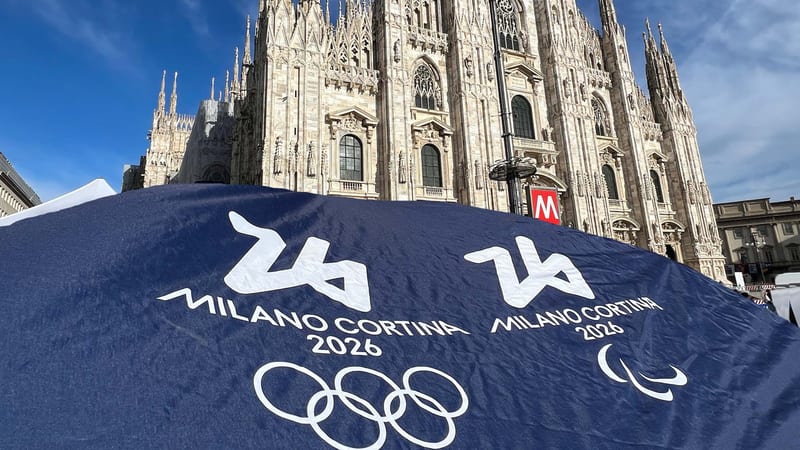Immigration after the 2025 rule changes — protecting the ‘hidden’ sports workforce

We explore the new immigration changes including higher salary thresholds, stricter qualification levels and limited relief under the TSL.
Read more
We make the difference. Talk to us: 0333 004 4488 | hello@brabners.com
AuthorsAllana Edwards
8 min read

Image credit: sports photos — Adobe Stock
Excitement is building for the Milan 2026 Winter Olympics (Milano Cortina 2026), which is set to become the most gender-balanced Olympic Winter Games in history. According to the International Olympic Committee (IOC), a record 47% of the athletes in Milan will be female — a 1.6% increase from the Beijing Winter Olympics 2022.
Following in the footsteps of the Paris 2024 Summer Olympics — which set many huge equality milestones including having a 50:50 male to female quota, launching the Olympic Village Nursery and ensuring a more balanced schedule and media coverage — former IOC President Thomas Bach stated that “significant progress” has been made “to close the gender gap at the Olympic Winter Games”, with 47% of participants set to be female at Milan 2026 compared to just 40% in Sochi 2014. Of the 188 events at Milan 2026, a record 50 are set to be women’s events — four more than we saw at Beijing 2022. 54 events are men’s events and there are also 12 mixed-gender events.
Bach has since been succeeded by the IOC’s first-ever female president Kirsty Coventry, who’s focused on advancing safeguarding measures to help champion female athletes and act as a catalyst for further change. It also looks like Los Angeles 2028 will have more females competing than males for the first time in Olympic history.
Yet there are still huge discrepancies in pay for athletes, with female success in a recent ski jumping World Cup qualifying event rewarded by receiving token gifts from partners like shower gel and shampoo while their male counterparts won prize money — showing that much is still to be done to achieve true and lasting parity.
Here, Allana Edwards takes a look at the initiatives set to transform female athlete participation in Milan and LA and looks ahead to what this could mean for the future of women’s sport.
On 30 December 2024, after finishing first in a qualifying ski jumping World Cup event hosted in Germany, Selina Freitag won “a partner bag with shower gel and shampoo and four hand towels” while her male counterpart Jan Haerl was awarded 3,000 Swiss francs.
The women’s event was eventually won by Slovenia’s Nika Prevc, who collected 4,300 Swiss francs in prize money, while Austria’s Daniel Tschofenig collected 13,000 Swiss francs in prize money for winning the men’s event.
Such discrepancies in winnings sparked discussion around gender equality, especially considering that Milan 2026 will continue to exclude women from one of the ski disciplines, Nordic Combined, which involves ski jumping and participating in a cross-country skiing race. Women have been unable to participate in this event in the Winter Olympics since 1924.
The International Ski and Snowboard Federation (FIS) expressed that the reason for the discrepancy in prizes between the men and women’s disciplines is that women’s ski jumping is a relatively new sport with less spectator interest and marketing revenues than men’s ski jumping. FIS said that the gift also included a voucher for a weekend of wellness treatments and “was certainly well intentioned, but it is understandable that it may have generated frustration and given a bad impression if seen as formal compensation for the victory. This was not the case.”
However, Her Sport — an organisation that advocates for gender equality in sport, expressed that “we often hear the argument that it comes down to revenue generation, but … revenue doesn’t grow in a vacuum,” the group added. “It starts with investment & commitment to bridging the gap.”
America’s Tara Geraghty-Moats is one of the top female Nordic Combined competitors in the world yet unable to compete in this event at Milan 2026. She believes that the same discriminatory beliefs which initially prevented women’s ski jumping from being part of the Games are at play here. “I do really respect the work the [FIS] and the [IOC] have done” she said, “to some extent of expanding women's sports. But we need to be honest about the discrimination that is still happening”.
The IOC has agreed that Nordic Combined does “not fulfil universality”, meaning that there are concerns about its limited popularity and viewership and that it wants to expand its audience to have a global reach. The absence of a women’s competition in Nordic Combined is thought to be a major contributing factor to its lack of universality. Not only has the sport never featured a women’s event at the Olympics, but it’s now the only event at Milan 2026 to exclude women. This puts Nordic Combined at risk of being removed from the Olympic Programme.
Thankfully, leaders like Diana Bianchedi, Chief Strategy Planning and Legacy Officer for Milano Cortina 2026, are committed to levelling the playing field for female athletes and women in leadership positions.
As with Paris 2024, Milan 2026 is focusing on transforming public spaces to encourage sports participation among girls and women. Bianchedi told Olympics.com, “we are working on a legacy programme to promote the creation of spaces for people to do physical activity. In Italy, the age where people do the least activity is from 35 to 50 years old. In this range, the most inactivity is among women. For example, if we can create a space in the park where you can do physical activity, this will increase the number of people doing so. But a lot of women will not go to the park when it gets dark as it won’t be safe. We have to consider that women have different needs, and we are making sure this is taken into account when these programmes are designed.”
Bianchedi also told Olympics.com that “we are aiming for more than 40 per cent women in our workforce… Now we have 51 per cent. We are also working hard on this by providing training on gender equity, female leadership and safeguarding as part of the onboarding process for new employees.”
In addition, the Italian National Olympic Committee (CONI) is working with the IOC to help close the gender equality gap and has scheduled a set of meetings in each of the 21 locations of the CONI Regional Schools to raise awareness on gender discrimination and inequality in sports, prevent gender discrimination and violence in sporting contexts, train participants on the value of gender equality in sports, integrate the gender mainstreaming approach into sports policies and organisations and transform gender equity from a principle to a concrete practice on the field.
Looking at the recent event programme and athlete quotas for Los Angeles 2028, we can gauge what this Olympic Games will look like in terms of equality and it is set to over-deliver in terms of participation at least, with more female athletes due to compete than male athletes.
Following a meeting of the IOC’s Executive Board, sports director Kit McConnell said: “This programme really gives a powerful platform and promotion of female athletes for the first time in Olympic history… There will be more quota places available for qualification for women than for men, reaching full gender equality in boxing and water polo, to add to all of the other sports we’ve achieved gender equality in in [sic] Paris.”
For the first time in Olympic history, all team sports will have at least the same number of women’s teams as men’s teams, with water polo adding two women’s teams to make it 12 teams for each gender. Football will feature more women’s teams (16) than men’s (12). Boxing has added another women’s weight category to ensure full gender parity across events, while mixed events have been expanded to include archery, athletics (4x100m mixed relay), golf, gymnastics, rowing coastal beach sprint and table tennis.
So, out of the 10,500 athletes in the initial sports programme, 5,333 are female compared to 5,167 who are male. The additional sports added 322 female athletes and 376 male athletes. In addition, six mixed events were added to the event programme, so that out of 351 events there are now 161 women’s, 165 men’s and 25 mixed.
It’s great to see that the largest sporting event in the world is on its way to achieving numerical gender parity on the field of play.
However, this should not be the finish line since there is more progress to make around sustainable equality in sport for women and girls, from the elite levels right down to the grassroots. We must also continue to address the remaining gender gaps in sports, especially in terms of access to sport, discrepancies in prize money and females in coaching roles and leadership positions.
Hopefully the progress made so far will inspire other governing and sporting bodies to follow suit. With the IOC being led by its first ever female president, the future of women’s sport has never looked more promising.
If you need advice on how to implement more gender-equal initiatives, policies and procedures or want to talk about how the changing landscape of women’s sport could affect your club or playing career, our specialist sports sector team is here to help.
We work closely with national governing bodies, international federations, elite sports clubs and large sports agencies both throughout the UK and around the world.
Talk to us by calling 0333 004 4488, emailing hello@brabners.com or completing our contact form below.

Loading form...

We explore the new immigration changes including higher salary thresholds, stricter qualification levels and limited relief under the TSL.
Read more

We explore how the Employment Rights Bill reshapes union access, strike rules and workplace protections for sport organisations.
Read more

We explore how women’s cricket is evolving and what that means for the sport’s future on and off the field.
Read more